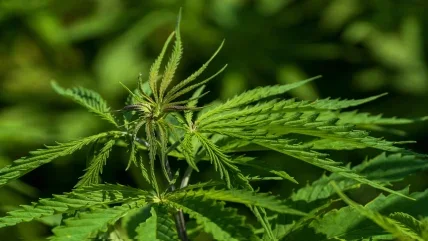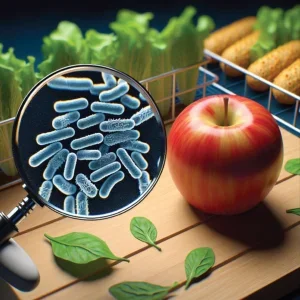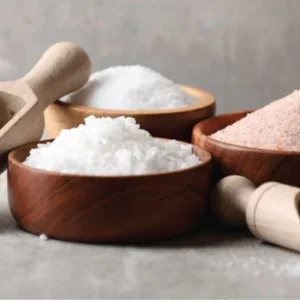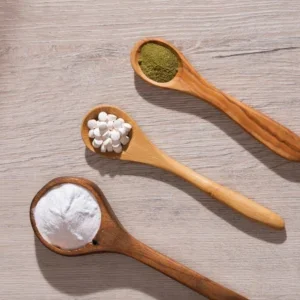
At a time when lobbyists are pushing for change, it can be difficult to keep track of the legal status of cannabis. With an inconsistent patchwork of laws around the world, there is little consensus as to whether the plant should be available purely for medical use, decriminalised for personal use or (as is the case in most countries) not available at all.
An added layer of complication arises when you consider the plant’s constituent parts. While tetrahydrocannabinol (THC), its principal psychoactive component, is generally treated as an illicit drug, another compound, cannabidiol (CBD), has historically been less tightly regulated.
Derived from the resin of maturing Cannabis sativa plants, CBD is believed to have numerous pharmacological benefits. Studies suggest it might hold therapeutic potential for treating anxiety disorders, obesity, epilepsy, dystonia, diabetes and cancer, among other illnesses, as well as helping with infection control. On top of this, it has been used as a cosmetic ingredient, a nutraceutical supplement, a food product and an ingredient in ecigarettes.
“CBD is a cannabinoid inherent to the genus Cannabis. It is produced during the growth cycle of the plant, where it emerges in the floral material in the form of trichomes – resinous matter,” says Colleen Keahey, executive director of the Hemp Industries Association (HIA). “The matter can be processed and has been used in the supplement and nutraceutical markets. It can be used as a food, sublingual liquid, capsule, topical cream and rectal suppository.”
Because the compound is not psychoactive (it does not cause the ‘high’ sought by recreational marijuana users), it is not scheduled by the UN Convention on Psychotropic Substances (1971) and there is no international regulation banning its movement around the globe. Yet confusion reigns as to its role in the natural products industry, and this confusion has intensified in recent months, following new attempts to regulate hemp products in the US and Europe.
Safety first
In December 2016, the US Drug Enforcement Administration (DEA) announced that extracts of marijuana would soon be treated as a Schedule-I controlled substance (the same level as heroin). Under previous legislation, cannabis products containing less than 0.3% THC were treated as legal substances, but the new announcement seems to suggest that CBD will be banned too.
In the UK, meanwhile, the Medicines and Healthcare Products Regulatory Agency (MHRA) made the decision to define CBD as a medicine, effectively putting an end to non-licensed nutraceutical products. It sent letters to 18 leading CBD oil outlets, giving them 28 days to cease trading.
This decision has drawn ire from industry groups. Peter Reynolds, president of the cannabis law-reform advocacy organisation CLEAR, told VICE that the decision is “potentially a health disaster for tens of thousands of people”, adding that the UK Government is sending mixed messages about whether cannabis has medical applications. Although CBD is now classed as a medicine, the Home Office still deems cannabis itself to have no medical value.
The MHRA, however, has framed the decision as a way of protecting consumers; for example, it requires manufacturers to meet certain safety, quality and effectiveness standards.
“Our primary concern is patient safety,” the agency said in November 2016. “In order to ensure that products remain available until individuals have the opportunity to discuss their treatment with their doctor, companies now have until 31 December 2016 to voluntarily operate within the law by withdrawing their existing products from the market or working with MHRA to satisfy the legal requirements of the Human Medicines Regulations 2012.”
Use and abuse
So, what will these changes mean for manufacturers and their end users? And in what contexts can CBD now be used?
As Boris Bañas, a board member at the European Industrial Hemp Association (EIHA), explains, it is only recently that the CBD market has really taken off. In 2016, 30,000ha of industrial (non-psychoactive) hemp were produced in the EU, with demand for CBD beginning to climb.
“As the hemp industry progresses, market players are trying to add value to all biomass produced by this excellent plant,” he says. “Why should application of the flowering parts of hemp be limited to fodder?”
Hempseed and hempseed oil, which are fully legal, have been sold on the EU market for a number of years. Renowned for their nutty taste and high concentration of omega oils, they contain only trace levels of CBD and THC, on a parts-per-million level, and are classed as generally ‘safe’ within the EU.
The EU does not, however, allow food or food supplements to contain pure CBD unless the manufacturer has marketing authorisation for placing a novel food ingredient on the market. Although at least one company has already filed an application, no such authorisation has been released at the time of writing. The situation around crude hemp extracts and tinctures is even more confusing, requiring market players to exert due diligence on a county-by-country basis.
CBD’s use in cosmetics is less contentious. Manufacturers can apply four separate claims to their CBD products (antioxidant, skin conditioning, skin protecting and antiseborrheic) without any restrictions. Meanwhile, the ecigarette market is booming, although national regulations may apply.
With regard to medical applications, there are relatively few products on the market. The best-known is probably Sativex, a clinically approved drug for multiple sclerosis. Another promising example is the epilepsy drug Epidiolex by GW Pharma, which recently reached phase III of clinical testing.
“Cannabidiol produced under good manufacturing practice rules in pharmaceutical purity is gaining attention of producers of medicinal products and companies performing clinical trials,” says Bañas. “Although CBD is not considered an active pharmaceutical ingredient in the European region, it has been used in some orphan medicinal products for rare diseases.”
Regulation is key
Given this mixed regulatory picture, the EIHA advocates strongly for a consistent regulatory framework. It recommends a three-tier approach in which low, medium and high doses of CBD are regulated separately.
Under this system, pure CBD and products with a high CBD concentration (equating to a daily intake of more than 200mg oral dose a day), would be treated as medicinal products. This falls in line with the new MHRA ruling, and would, says Bañas, spell the end to cowboy-style marketing and unsubstantiated health claims.
Where the EIHA’s view differs from the MHRA’s is in its treatment of lower doses. In this regard, it is opposed to treating CBD as a prescription-only drug – a move it believes serves only to damage the industry as a whole.
“Products with a medium CBD concentration (20–200mg oral a day for an adult) should be available in chemists and pharmacies either as herbal medicinal products without prescription, or as food,” says Bañas. “Low CBD concentrations (under 20mg a day for an adult) should be allowed in food products without any restrictions.”
This recommendation stems largely from limited evidence of harm. In one 2011 research review, based upon 132 studies, CBD was shown to have no effect on heart rate, blood pressure, body temperature, gastrointestinal transit, or psychomotor or cognitive functions. This lack of side effects appears to hold even at very high doses, meaning it is hard to find any scientific basis for the restrictions.
On top of that, there is strong evidence to suggest that lower doses of CBD may do some good. To date, over 1,600 studies on the subject have been published, although the research is not yet robust enough to make any definitive health claims.
“Equally as important as CBD’s pharmacological effects are its health-maintaining properties in lower doses,” says Bañas. “These include antioxidative, neuroprotective and anti-inflammatory effects. For example, CBD is a neuroprotective antioxidant more potent than ascorbate (vitamin C) or tocopherol (vitamin E). As a cosmetic ingredient, CBD can be used to decrease sebum and sebocytes.”
Legal limitations
Keahey agrees that CBD should be treated not as a narcotic but as a natural product.
“We must identify and travel the pathway to over-the-counter CBD acceptability and safety, just as fish oil is sold over the counter and by prescription,” she says. “However, this is an ongoing battle in the demand for hemp-derived cannabinoids, which are non-euphoric but may have preventative benefits like vitamins.”
Following the DEA’s last clampdown on marijuana extracts, HIA has been fighting to protect industrial hemp. Arguing that the ban is illegal, it has filed a motion to hold the DEA in contempt of court.
“The administrative ruling by the DEA implies that hemp-derived cannabinoids may be regulated,” says Keahey. “As a result, retailers decided to place stop-orders and remove product from the shelves that they believed could give rise to DEA action. This has led to a major loss of revenue for hemp-derived cannabinoid product producers and manufacturers across the country. The loss is significant and cannot go unanswered, which is why HIA is intent on protecting these opportunities.”
HIA’s argument, in essence, is that hemp is distinct from marijuana, and is therefore not a controlled substance when grown under a compliant state programme. It believes the DEA’s position contravenes a US Congressional ruling made in 2004.
“These adverse manoeuvres to our industry are motivated by control, which will be prohibitive for a free market,” says Keahey. “Ultimately, we want the conflation of hemp and marijuana to be eliminated at the federal level, and for the DEA to be removed from involvement in any processes related to industrial hemp as an agricultural commodity and final product.”
The road ahead
US manufacturers, distributors and farmers must also contend with a barrage of state legislation seeking to make CBD a controlled substance without exceptions for the hemp industry. For the time being, however, at least 16 states enjoy legalised industrial hemp production, and many others have passed laws allowing research and pilot programmes.
It remains to be seen where the law will settle, but manufacturers can be heartened by the fact there are organisations prepared to challenge contradictory or groundless laws. Clearly, there is a case for more consistent legislation, and for hemp to be treated in a separate category to medical marijuana.
What’s more, the consumer appetite for CBD-based products looks set to grow. Bañas believes that, as the presumed health benefits become more widely known, consumers will seek out CBD on their own, without any real push from industry.
“As access to scientific results has become easier for consumers, we have arrived at a sort of ‘pull’ marketing situation. The market has overrun the regulatory aspects,” he remarks.






